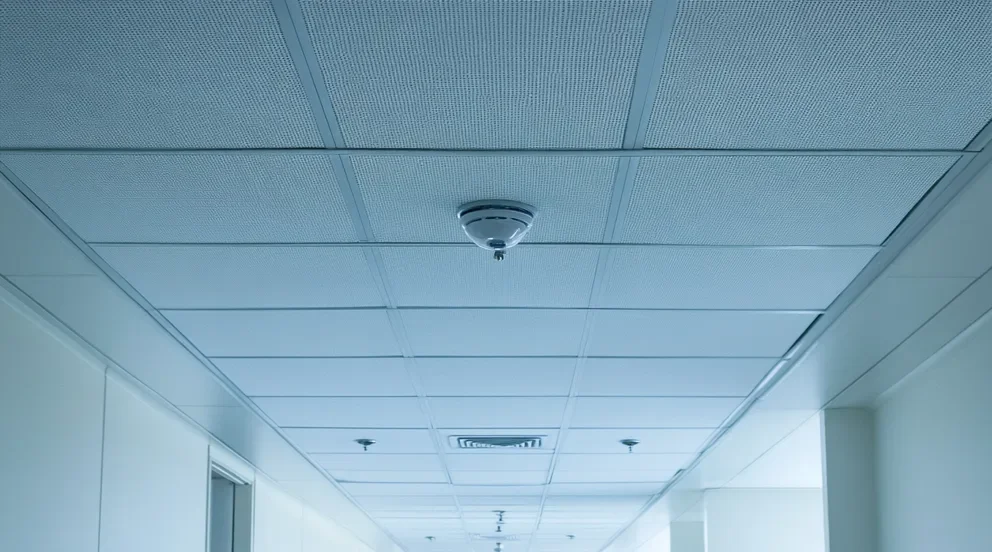A heat pump with horizontal discharge is a type of heat pump that uses a horizontally-mounted evaporator and condenser coils to transfer heat. This configuration is often used in ductless mini split systems, as it allows for the indoor and outdoor units to be installed without the need for ductwork.
The horizontal design of the coils also allows for more efficient heat transfer, as there is less chance for air to become trapped in the coils and cause the system to work harder. Additionally, horizontal discharge heat pumps are often quieter than other types of heat pumps, as the coils are not located near the outdoor unit’s compressor.
What are the benefits of a Heat Pump With Horizontal Discharge Unit?
There are several benefits to using a heat pump with horizontal discharge, including:
Improved Efficiency: The horizontal design of the coils allows for more efficient heat transfer, which can lead to lower heating and cooling bills.
The horizontal design of the coils allows for more efficient heat transfer, which can lead to lower heating and cooling bills. More Discreet: Heat pumps with horizontal discharge units are often more discreet than other types of heat pumps, as the outdoor unit can be installed away from view.
Heat pumps with horizontal discharge units are often more discreet than other types of heat pumps, as the outdoor unit can be installed away from view. Quiet Operation: The coils on a horizontal discharge heat pump are not located near the outdoor unit’s compressor, which can lead to quieter operation.
The coils on a horizontal discharge heat pump are not located near the outdoor unit’s compressor, which can lead to quieter operation. Easy Installation: Horizontal discharge heat pumps often do not require ductwork, making them easier to install than other types of heat pumps.
What are the disadvantages of a Heat Pump With Horizontal Discharge Unit?
There are a few disadvantages to using a heat pump with horizontal discharge, including:
Limited Space: The outdoor unit of a horizontal discharge heat pump must be installed in an area with enough space for the coils. This can be difficult to find in some homes.
The outdoor unit of a horizontal discharge heat pump must be installed in an area with enough space for the coils. This can be difficult to find in some homes. More Expensive: Horizontal discharge heat pumps are often more expensive than other types of heat pumps, as they require special coils and an extra outdoor unit.
Horizontal discharge heat pumps are often more expensive than other types of heat pumps, as they require special coils and an extra outdoor unit. More Complex: The horizontal design of the coils can make horizontal discharge heat pumps more complex to install and repair than other types of heat pumps.
Should I get a Heat Pump With Horizontal Discharge Unit?
A heat pump with horizontal discharge is a good choice for those who want an efficient and discreet heating and cooling system. However, horizontal discharge heat pumps can be more expensive and complex to install than other types of heat pumps. Before making a decision, it is important to speak with a qualified HVAC contractor to find out if a heat pump with horizontal discharge is the right choice for your home.
What are the key features of a Heat Pump With Horizontal Discharge?
There are several key features to look for when choosing a heat pump with horizontal discharge, including:
Efficient coil design: The horizontal design of the coils allows for more efficient heat transfer, which can lead to lower heating and cooling bills.
The horizontal design of the coils allows for more efficient heat transfer, which can lead to lower heating and cooling bills. Discreet outdoor unit: The outdoor unit of a heat pump with horizontal discharge can be installed away from view, making it more discreet than other types of heat pumps.
The outdoor unit of a heat pump with horizontal discharge can be installed away from view, making it more discreet than other types of heat pumps. Quiet operation: The coils on a heat pump with horizontal discharge are not located near the outdoor unit’s compressor, which can lead to quieter operation.
The coils on a heat pump with horizontal discharge are not located near the outdoor unit’s compressor, which can lead to quieter operation. Easy installation: Heat pumps with horizontal discharge often do not require ductwork, making them easier to install than other types of heat pumps.
What are some of the most popular makes and models of Heat Pump With Horizontal Discharge?
Some of the most popular makes and models of heat pump with horizontal discharge include:
Frigidaire FGHP0844T1 8,000 BTU Heat Pump With Horizontal Discharge Unit: This Frigidaire model features 8,000 BTUs of heating and cooling power, making it ideal for small to medium-sized rooms.
This Frigidaire model features 8,000 BTUs of heating and cooling power, making it ideal for small to medium-sized rooms. GE Zoneline PTAC 7,200 BTU Heat Pump With Horizontal Discharge Unit: This GE model features 7,200 BTUs of heating and cooling power, as well as a built-in air conditioner.
This GE model features 7,200 BTUs of heating and cooling power, as well as a built-in air conditioner. LG LW8016ER 8,000 BTU Heat Pump With Horizontal Discharge Unit: This LG model features 8,000 BTUs of heating and cooling power, as well as a remote control for easy operation.
This LG model features 8,000 BTUs of heating and cooling power, as well as a remote control for easy operation. Frigidaire FGHP1044T1 10,000 BTU Heat Pump With Horizontal Discharge Unit: This Frigidaire model features 10,000 BTUs of heating and cooling power, making it ideal for larger rooms.
This Frigidaire model features 10,000 BTUs of heating and cooling power, making it ideal for larger rooms. Haier HPP08XCR 8,000 BTU Heat Pump With Horizontal Discharge Unit: This Haier model features 8,000 BTUs of heating and cooling power, as well as a 24-hour timer for easy operation.
How much does Heat Pump With Horizontal Discharge cost and how long does it last?
Heat pumps with horizontal discharge typically cost between $500 and $1,500, depending on the make and model. Heat pumps with horizontal discharge often last 10-15 years with proper maintenance.
What are some of the alternatives to Heat Pump With Horizontal Discharge?
Some of the alternatives to heat pump with horizontal discharge include:
Window air conditioner: Window air conditioners are a popular alternative to heat pumps with horizontal discharge, as they are less expensive and easier to install. However, window air conditioners can be loud and can take up valuable window space.
Window air conditioners are a popular alternative to heat pumps with horizontal discharge, as they are less expensive and easier to install. However, window air conditioners can be loud and can take up valuable window space. Central air conditioner: Central air conditioners are a popular alternative to heat pumps with horizontal discharge, as they provide powerful cooling and can be controlled by a central thermostat. However, central air conditioners require ductwork, which can be expensive and difficult to install.
Central air conditioners are a popular alternative to heat pumps with horizontal discharge, as they provide powerful cooling and can be controlled by a central thermostat. However, central air conditioners require ductwork, which can be expensive and difficult to install. Portable air conditioner: Portable air conditioners are a popular alternative to heat pumps with horizontal discharge, as they are less expensive and can be moved from room to room. However, portable air conditioners can be loud and can take up valuable floor space.
Portable air conditioners are a popular alternative to heat pumps with horizontal discharge, as they are less expensive and can be moved from room to room. However, portable air conditioners can be loud and can take up valuable floor space. Ceiling fan: Ceiling fans are a popular alternative to heat pumps with horizontal discharge, as they circulate air and can help to keep rooms cool. However, ceiling fans do not actually lower the temperature of a room, so they must be used in conjunction with another cooling method.



